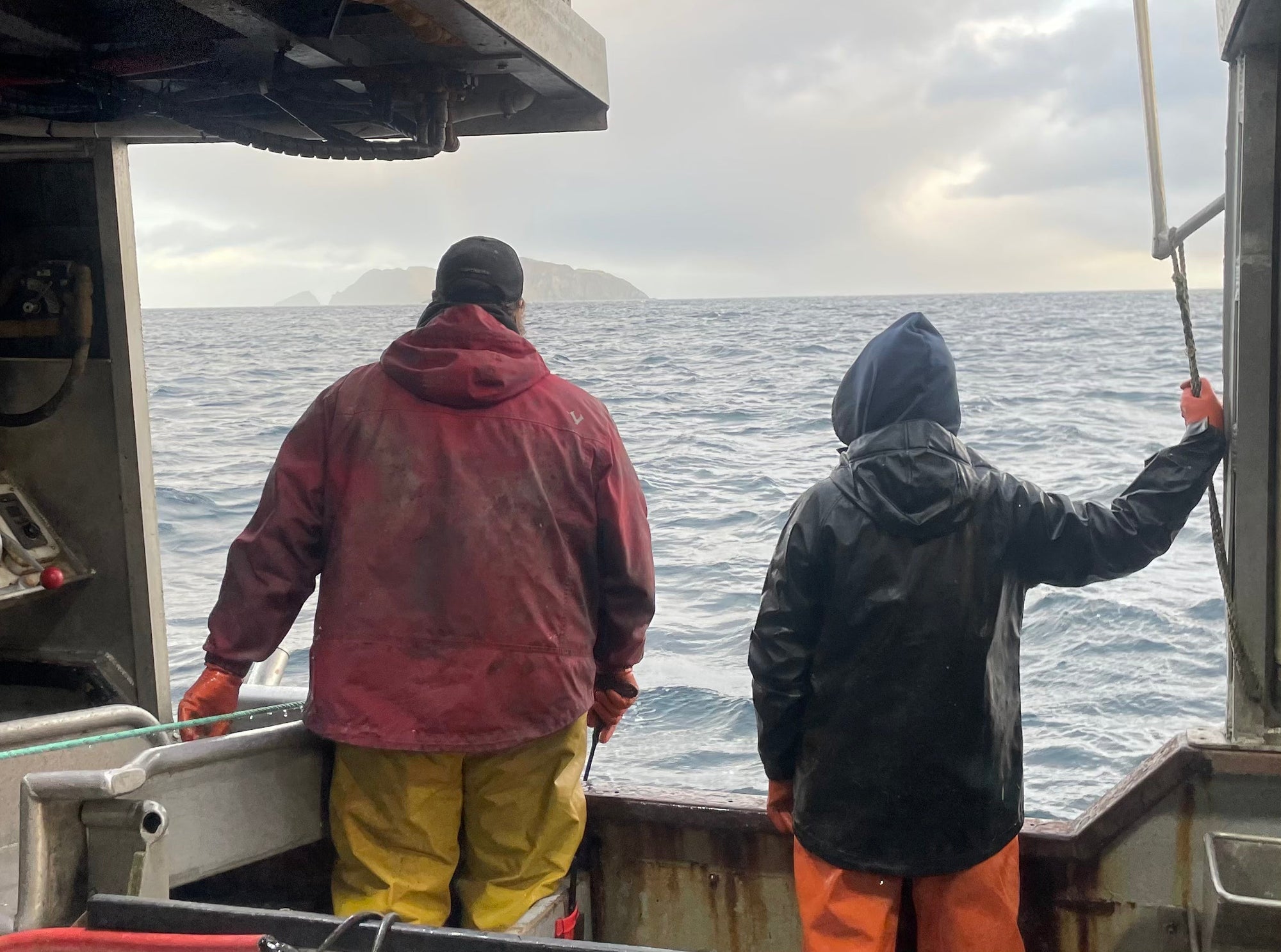Welcome to the first feature in our series celebrating the hardworking fishermen and women who bring wild, sustainable seafood to our plates. Today, we’re thrilled to introduce Molly Ekstrom, a commercial fisherwoman with deep roots in Alaska’s fishing tradition. Molly’s story is one of passion, resilience, and a profound connection to the ocean. Join us as she shares her journey aboard the F/V Sherrie Marie and offers a glimpse into life at sea.
Q&A with Molly Ekstrom
How did you get started in the fishing industry?
Like a lot of fishermen in Alaska, I come from a fishing family and got started at a very young age! My dad is a commercial fisherman. When I was young, he trolled for salmon (primarily king and coho) in Southeast Alaska. I was about 5 years old when he started taking me on 1-2 day trips in and out of my hometown of Yakutat, Alaska. By the time I was 7, I was spending summers fishing with him all over Southeast Alaska. Some of my fondest childhood memories come from time spent on the water. I spent a lot of my time fishing as a kid miserably sea sick, but I always wanted to be with my dad, so I never passed up on the opportunity to go. Even though there was a lot of misery, I wound up taking away more good memories than bad!
Name of your boat (or the boat you fish on)?
F/V Sherrie Marie (65ft steel longliner originally built for shrimp dragging (trawling) in the Gulf of Mexico).
What do you fish for and where do you typically fish?
We fish for Pacific halibut and sablefish (black cod) in the Bering Sea and Gulf of Alaska, spanning from Southeast to the Aleutian Islands.
What do you like to do on the boat during downtime?
I’ve worked as the cook on the Sherrie Marie since I first started here 7 seasons ago. In my downtime, I love to cook more complicated meals and bake fresh treats like homemade sourdough bread and lemon bars. If I’m not in the galley, you’ll often find me reading or in the wheelhouse planning and chatting with my husband Jesse, who is the captain of the Sherrie Marie.
What’s the best part of your job?
I really love my job, so it’s hard to pick the best part! Overall, I love that I get to work alongside my husband every day and share this unique lifestyle together. Being on the ocean is incredible, and I’ve been fortunate to witness amazing sights, like pods of rare beaked whales swimming by in the Gulf of Alaska or smoking volcanoes in the Aleutians. People pay thousands to catch a glimpse of what we see in our “office” every day.
Beyond the sights, one of the best parts of fishing is connecting with people from all walks of life. When the crew really clicks, we become like a little family. As the cook, I love taking care of my “boat family,” preparing nutritious meals full of love. Food has a way of bringing people together, and good food can completely change a bad day for the better. When the crew is well-fed and happy, we all work more efficiently.
What’s the one thing you want consumers to know about wild seafood that they might not already know?
Most people don’t realize how regulated the commercial fishing industry is, ensuring that our seafood is sustainably caught. Everything from garbage disposal to vessel location is strictly monitored. Fishermen must understand and maintain records on hundreds of laws, all designed to protect marine resources for future generations.
How can American consumers help make your job easier or better?
Consumers can help by being cautious about the information they consume and share about seafood. While unsustainable fishing practices exist on an industrial scale, small-scale fishermen like us often get unfairly lumped in with them. It’s important to recognize the difference. Sustainable commercial fisheries—especially in Alaska and other U.S. states—operate under strict regulations that protect both the environment and targeted species populations.
If you weren’t a commercial fisherman, what do you think you’d be doing or want to do instead?
I have a bachelor’s degree in fisheries and ocean sciences, so I’d love to work in fisheries management here in Alaska. As a dream secondary job, I’d love to work as a private chef or run my own catering business focusing on seafood!
What’s your favorite seafood to eat?
Halibut is my favorite! It’s so versatile and easy to cook. There are hundreds of delicious ways to prepare it, making it a staple for any seafood lover.
What’s your favorite seafood recipe or way to make it?
Two recent favorites are Premier Catch’s recipes for bacon-wrapped scallops and Mediterranean halibut en papillote. Both are quick, easy, and incredibly flavorful. My crew devours them every time I make them!
Anything else you want to share?
As fishermen, we work hard to bring sustainable seafood to the world, often making sacrifices like time away from home and family. That’s why our work matters so much to us. Many of us also act as citizen scientists, advocating for sustainability and ensuring that our industry thrives for future generations. We want to pass down this tradition and preserve our oceans for those who come after us.
Conclusion
Molly’s story is a testament to the dedication and passion that fuels Alaska’s fishing industry. From braving seasickness as a child to cooking up nourishing meals for her “boat family,” Molly’s journey is as inspiring as it is authentic. Stay tuned for more stories in our series as we celebrate the fishermen and women behind the seafood we love.


